Editorials
Imagining Aliens through the Lenses of Horror and Reality

Aliens have been the subject of millions of imaginations over the years. Lately, the topic has begun to become a reality as the United States Pentagon released information on a lengthy UFO/UAP investigation, and NASA has recently opted to look into UFOs.
While aerial objects of unknown origin don’t necessarily mean extraterrestrials, a small poll on Twitter found that 43.5% of voters believe aliens to be the leading cause behind UFO sightings. Similarly, a survey conducted by the Pew Research Center in 2021 found that 51% of voters believed that “UFOs reported by people in the military” are more than likely the result of non-human, intelligent beings.
While it’s unclear whether this is the case, what would it mean for humanity if it was? The answer to this question has been traversed through some of the greatest minds in horror, such as Tobe Hooper, John Carpenter, Ryan Murphy, Brad Falchuk, Stephen King, M. Night Shyamalan, Ridley Scott, and more.
While, thankfully, none of their imaginings have yet come to fruition, through the lens of their creations, we can imagine what we’d be up against in the face of an alien threat.
Everything from these masters of horror’s depictions of the arrival, appearance, communication, goals, and weaknesses of aliens is examined and compared to how it all stacks up against what experts, eyewitnesses, and logic tells us.
How did they get here?
When the idea of aliens visiting Earth is mentioned, the thought of UFOs is not far behind.
Whether we picture the flying saucers popularized in films of the 1950s, such as The Day the Earth Stood Still, a large mothership such as the one from Close Encounters of the Third Kind, or something else altogether, the thought of spacecraft and alien invaders go hand in hand.
However, other horror films have strayed from this norm, delivering alien life through crashed meteorites or meteor showers, such as in Creepshow, Invaders from Mars, Color Out of Space, and The Seed.
No matter the method, aliens descending from the skies above is the most common depiction.
What UFO reports say:
The descriptions of different unidentified aerial phenomena have varied greatly over generations. World War II pilots saw different colored orbs of light that moved at impossible speeds and angles, so much so that they nicknamed them Foo Fighters.
Metallic saucers/spheres, pyramid-shaped objects, and irregularly shaped aircraft are all UFOs depicted in recently disseminated UFO footage captured by various forces of the United States military. While the sizes, shapes, and lights vary greatly, one overlying factor is the speed at which they travel and their impossible maneuvers. It’s worth mentioning that this, of course, does not make these objects alien in origin. A UFO is simply that, an unidentified object.
What do aliens look like?
To contend with the varied portrayals of intelligent alien life in horror, this list is broken down into three sections with subsections where necessary. This is by no means a complete list for as varied as life is on Earth; it is triply so in the imaginations of what the universe (or multiverse) could hold.
Creatures
Whether it’s the “run around on all fours” sort presented by Invaders from Mars (1986) and Cloverfield, or the slug-like variety depicted in Dreamcatcher and Slither, there have been a host of alien creatures in scary movies. Slugs are not the only slimeballs of alien depictions as The Blob and the true form of the creature from The Invasion of the Body Snatchers will attest.
But of course, the most notorious alien creature of them all, the Xenomorph from Alien, proves that bipedal monsters make for terrifying adversaries. While these aliens walk on two legs as humans do, they have multiple distinguishing features that make them decidedly different from humanity. The film A Quiet Place also displayed this sort of extraterrestrial as it has no eyes, advanced auditory systems, and long arms and legs that are unsettlingly disproportionate to its body.
Essence
While not as widely used as some of the other depictions on this list, an alien essence is a horrifying concept. Shudder Original Color Our of Space executes this idea in a way that bends reality. The Tommyknockers alsosaw an alien essence, though this one possesses everyone in its proximity.
Humanoid
These aliens look like humans but not quite. Fire in the Sky, Prometheus, and Predator are all examples of this. However, they are not the only representation of humanoid lifeforms.
The Greys
The grey aliens, depicted with large heads, black eyes, and grey skin, are the most prominent of all alien depictions. There’s a good reason for that, which will be explained momentarily. If you cannot picture one, look no further than the films Dark Skies, Dreamcatcher, Signs, or V/H/S/2. Or, as The Fourth Kind would chillingly remind us, picture the face of a white owl.
Clowns
That’s right, “Close Encounters of the Clown Kind” is a real thing. Well, not exactly, but Killer Klowns from Outerspace is, and although it’s a horror-comedy, viewers cannot deny the film’s creepiness. Moreover, the most recognizable horror clown of all time is oft forgotten that he is also a shapeshifting alien. Lest we forget, Pennywise was in Derry, Maine, because he crash-landed there.
Us
Whether it’s by parasitic infection, shapeshifting abilities, or impressive disguises, the scariest presentation of aliens comes in the form of them already existing among us. Many movies have executed this idea in various ways. Still, the most memorable examples of this idea occurred in the films: Invasion of the Body Snatchers, The Thing, Species, and lest we forget those with “formaldehyde face” once you’ve got the glasses on, They Live.
What alleged UFO abductees say
Horror films frequently use the “grey” variety of alien life from the testimony of famous UFO abductees Betty and Barney Hill in 1961. Their widely publicized claims about being abducted by creatures with grey skin and large eyes made a large impact on what society pictures when they imagine an alien.
How do aliens communicate?
Close Encounters of the Third Kind saw aliens communicate with humans through music tones and Signs saw the use of crop circles.
Other media such as Dreamcatcher, American Horror Story: Asylum, and American Horror Story: Death Valleyutilizes a “human ambassador” to serve as a bridge of communication, a human whose aid is typically acquired through telepathy and other forms of mental jiu-jitsu.
On the topic of telepathic connection, horror sees many extraterrestrials that communicate with each other through a hive mind, such as in The Faculty or Slither.
Of all forms of communication featured, though, the most chilling is the lack of it. There was no discussion possible with the aliens presented in Alien, Predator, Signs, or A Quiet Place. Those aliens aren’t interested in communicating with us.
What the experts say:
Since intelligent alien life would likely have very little in common with us Earthlings (would they even have mouths?), there would be a significant communication barrier between them and us. Scientists believe that math is the universal language, and that would be our best chance of sharing ideas.
However, historically we have used imagery to try to convey different ideas to intelligent life, should it exist. One recent example is the proposal NASA published, detailing a plan to send drawings of naked humans to space. Another example is the Voyager Golden Record that was sent to space in 1977, containing images and sounds of Earth.
What do aliens want from us?
Potential Spoilers
The depicted goals of an invading alien race are numerous. Some seek to inhabit the Earth (Invasion of the Body Snatchers), and others strive to make our planet more like their own (Color Out of Space). Then, there was Predator, who only did it for the thrill of the kill. Meanwhile, the aliens in Dark Skies want to come into your house and stack your dishes and canned goods up at impossible angles to mess with you.
Then, others are portrayed as just stopping by to steal people away. In the words of The Fourth Kind: “An encounter in the first kind, that’s when you see a UFO. The second kind is when you see evidence of it: crop circles, radiation. The third kind is when you make contact. But the fourth kind, there’s nothing more frightening than the fourth. You see, that one is when they abduct you.”
Some films look at the extraterrestrial motivation for abduction from the perspective of why humanity would do it: experimentation. While these films can make for the most horrific of alien encounters (here’s looking at you, Fire in the Sky), they are, unfortunately, the truest to life.
Not because alien experimentation is necessarily happening, but because that’s what humans do. We tag sharks, grow ears on mice, and test products on animals in ways akin to torture, all for our benefit. Should we expect aliens to be any different?
Whether it’s world domination, human enslavement, experimentation, destruction, or abduction, many horror films tirelessly try to give reasoning behind what is happening. Though if aliens ever did choose to invade, we may not survive long enough to know the reason why.
What are the aliens’ weaknesses?
Spoiler Alert
One factor that has allowed humans in horror movies to win against an invading alien race is discovering a particular weakness. Signs and A Quiet Place 2 both show the aliens’ aversion to water. A Quiet Place also demonstrated the aliens’ strength to be their weakness as loud sounds disable them. A homemade drug that served as a diuretic was the weapon of choice in The Faculty. Since most extraterrestrial imaginings tend to be mortal beings, the use of any number of commonplace weapons against them has also proven effective.
The reality of the matter is discussed by Dr. Steven Greer in Unacknowledged. He indicates that if intelligent aliens were able to visit Earth, that in itself would prove technological advances far beyond our own. Because of this, if aliens wished to harm us, any weakness an alien might have would be irrelevant because we’d still be no match for them.
One of my favorite pieces of UFO lore serves as a testimony to this idea. While I will not assert that aliens or UFOs piloted by aliens have ever been to Earth, the following story is true and paints a creepy picture of our defenses failing in the face of an aerial threat.
The Battle of Los Angeles
Two months after Pearl Harbor was attacked, on February 25, 1942, at around two a.m., a blackout was ordered in Los Angeles. Something was in the sky, and anti-aircraft weapons began firing hundreds of rounds of artillery at it. At least five people died in the ensuing chaos: three perished in motor vehicle collisions, and two died from heart attacks. Despite 1,440 rounds of ammunition fired, the object was reportedly not brought down. While the official cause of this event remains unknown, the running theory is believed to be a weather balloon combined with post-Pearl Harbor anxieties.
For now, in the absence of proof, intelligent alien life interacting with Earth does not exist outside of conjecture and the movies. However, if the films are any indicator, we may very well be better off alone.
For more coverage on space invaders, be sure to check out Shudder’s newly-added Alien Encounters Collection and Jordan Peele’s extraterrestrial horror film Nope, releasing theatrically on July 22nd.
If there are any classic alien-horror movies that you wish I’d included or any fun factoids worthy of a tinfoil hat that you’d like to divulge, feel free to share in the comments below!
Editorials
Is ‘Scream 2’ Still the Worst of the Series?
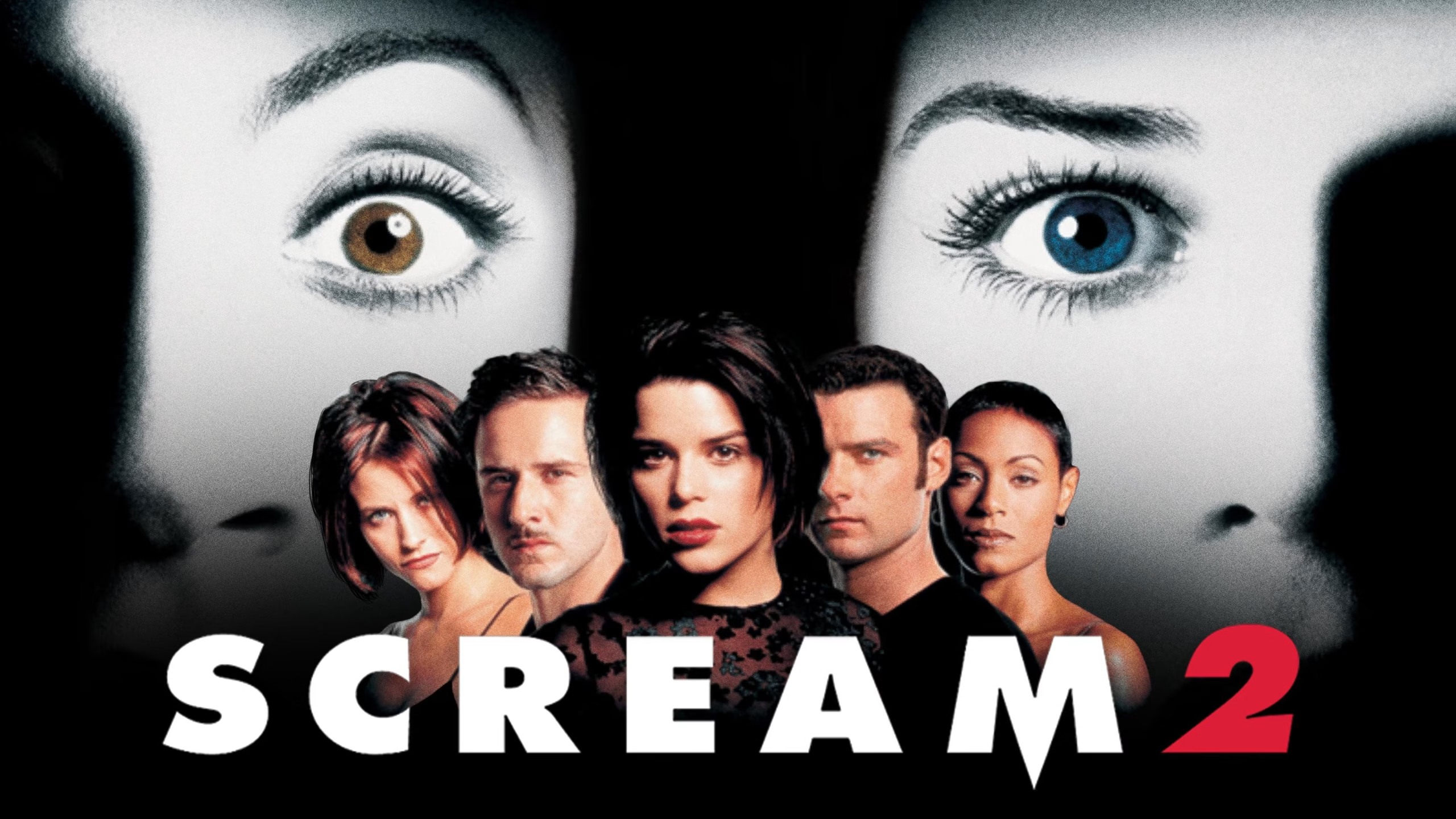
There are only so many times I can get away with burying the lede with an editorial headline before someone throws a rock at me. It may or may not be justified when they do. This article is not an attempt at ragebaiting Scream fans, I promise. Neither was my Scream 3 article, which I’m still completely right about.
I do firmly believe that Scream 2 is, at the very least, the last Scream film I’d want to watch. But what was initially just me complaining about a film that I disregard as the weakest entry in its series has since developed into trying to address what it does right. You’ve heard of the expression “jack of all trades, master of none”, and to me Scream 2 really was the jack of all trades of the franchise for the longest time.
It technically has everything a Scream movie needs. Its opening is great, but it’s not the best of them by a long shot. Its killers are unexpected, but not particularly interesting, feeling flat and one-dimensional compared to the others. It has kills, but only a few of them are particularly shocking or well executed. It pokes fun at the genre but doesn’t say anything particularly bold in terms of commentary. Having everything a Scream movie needs is the bare minimum to me.
But the question is, what does Scream 2 do best exactly? Finding that answer involves highlighting what each of the other sequels are great at, and trying to pick out what Scream 2 has that the others don’t.

Scream 3 Is the Big Finale That Utilizes Its Setting Perfectly
Scream as a series handily dodges the trap most horror franchises fall into: rehashing and retreading the same territory over and over. That’s because every one of its films are in essence trying to do something a little different and a little bolder.
Scream 3 is especially bold because it was conceived, written, and executed as the final installment in the Scream series. And it does that incredibly well. Taking the action away from a locale similar to Woodsboro, Scream 3 tosses our characters into the frying pan of a Hollywood film production. Despite its notorious number of rewrites and script changes (one of which resulted in our first solo Ghostface), it still manages to be a perfect culmination of Sidney Prescott’s story.
I won’t repeat myself too much (go read my previous article on the subject), but 3 is often maligned for as good a film as it turned out to be. And for all of its clunkier reveals, and its ghost mom antics, it understands how to utilize its setting and send its characters off into the sunset right.
Scream 4’s Meta Commentary Wakes Scream from a Deep Sleep
As Wes Craven’s final film, Scream 4 has a very special place in the franchise. It was and still is largely adored for bringing back the franchise from a deep 11-year sleep. With one of the craziest openings in any horror film, let alone a Scream film, it sets the tone for a bombastic return and pays off in spades with the journey it takes us on.
Its primary Ghostface Jill Roberts is a fan favorite, and for some people, she is the best to ever wear the mask. Its script is the source of many memorable moments, not the least of which is Kirby’s iconic rapid-fire response to the horror remakes question. And most importantly, it makes a bold and surprisingly effective return for our main trio of Sidney, Dewey, and Gale, whose return didn’t feel trite or hammy when they ended up coming back to Woodsboro for more.
Craven’s work on 4 truly understands the power its predecessors had exerted on the horror genre, both irreverent in its metacommentary and celebratory of the Scream series as a whole. The film is less of a love letter to the genre and more of a kicking down of the door to remind people what Scream is about. 4’s story re-established that Scream isn’t going away, no matter how long it takes for another film, and no matter how many franchises try to take its place.
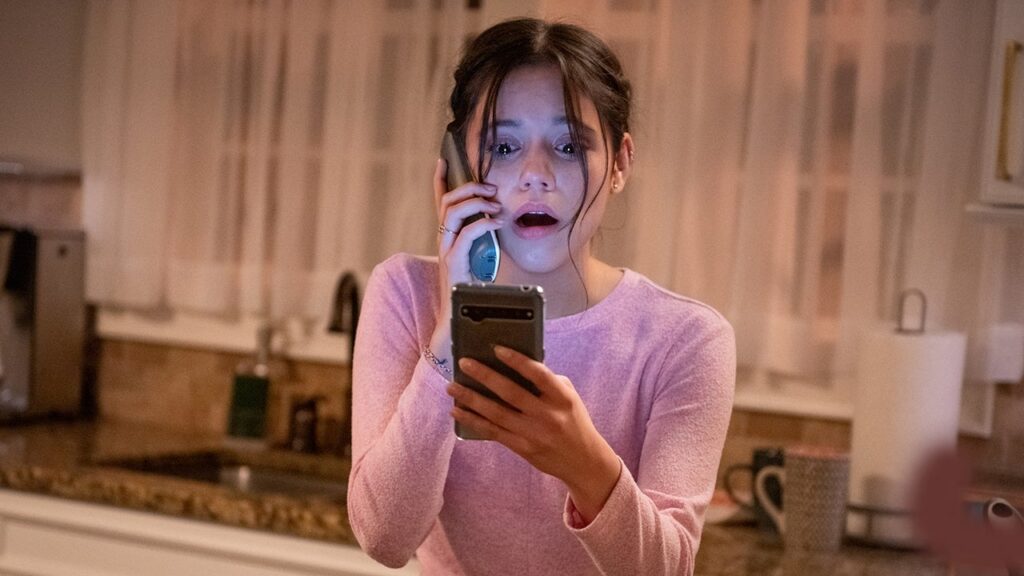
Scream 5 & 6 Is Radio Silence’s Brutal and Bloody Attitude Era
Put simply, Scream 5 and 6’s strong suit was not its characters. It was not its clever writing. The Radio Silence duology in the Scream series excelled in one thing: beating the hell out of its characters.
Wrestling fans (of which there is an unsurprising amount of crossover with horror fans) will know why I call it the Attitude Era. Just like WWE’s most infamous stretch of history, Radio Silence brought something especially aggressive to their entries. And it’s because these films were just brutal. Handing the reins to the series, Bettinelli-Olpin and Gillet gifted a special kineticism to the classic Scream chase sequences, insane finales, and especially its ruthless killers.
All five of the Ghostfaces present in 5 and 6 are the definition of nasty. They’re unrelenting, and in my humble opinion, the freakiest since the original duo of Stu Macher and Billy Loomis. Getting to hear all the air get sucked out of the room as Dewey is gutted like a fish in 5 was still an incredible moment to experience in theatres, and it’s something I don’t think would have happened if the films were any less mean and any less explosively violent.
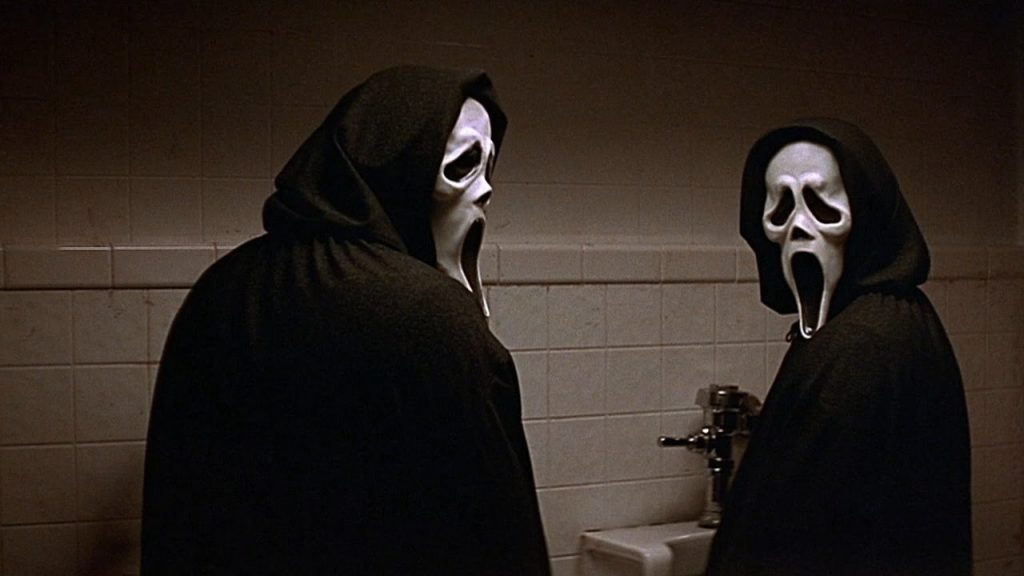
So, What Does Scream 2 Do Best Exactly?
So now, after looking at all these entries and all of their greatest qualities, what does Scream 2 have that none of the others do? What must I concede to Scream 2?
Really great character development.
Film is a medium of spectacle most of the time, and this is reflected in how we critique and compliment them. It affects how we look back on them, sometimes treating them more harshly than they deserve because they don’t have that visual flash. But for every ounce of spectacle Scream 2 lacks, I have to admit, it does an incredible job of developing Sidney Prescott as a character.
On a rare rewatch, it’s clear Neve Campbell is carrying the entirety of Scream 2 on her back just because of how compelling she makes Sidney. Watching her slowly fight against a tide of paranoia, fear, and distrust of the people around her once more, watching her be plunged back into the nightmare, is undeniably effective.
It’s also where Dewey and Gale are really cemented as a couple, and where the seeds of them always returning to each other are planted. Going from a mutual simmering disrespect to an affectionate couple to inseparable but awkward and in love is just classic; two people who complete each other in how different they are, but are inevitably pulled back and forth by those differences, their bond is one of the major highlights throughout the series.
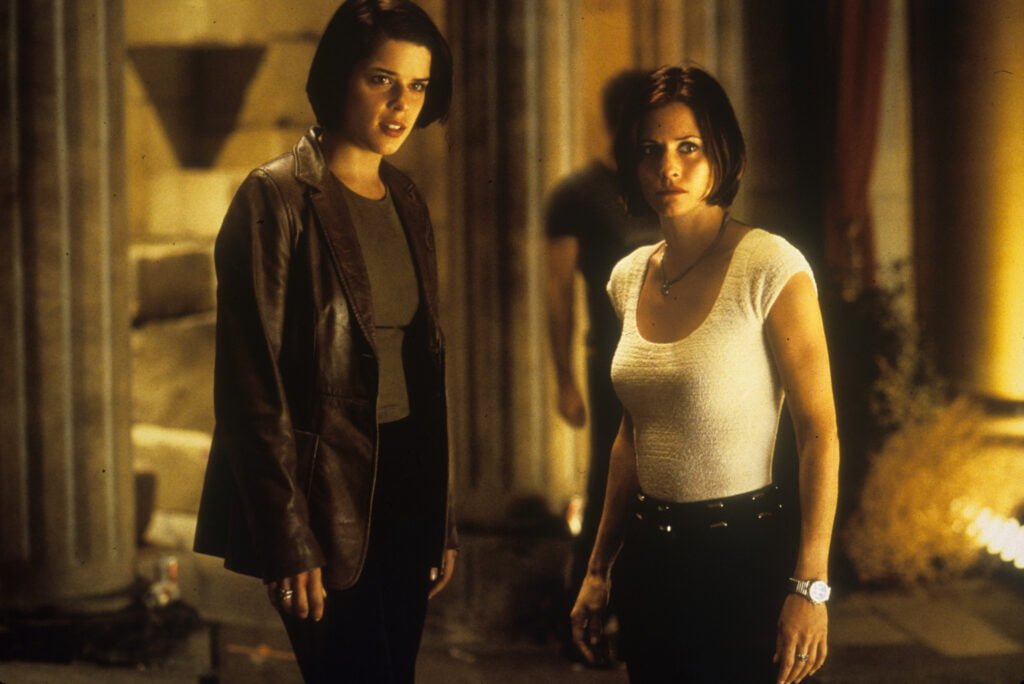
Maybe All the Scream Films Are Just Good?
These three characters are the heart of the series, long after they’ve been written out. I talk a big game about how Scream 3 is the perfect ending for the franchise, but I like to gloss over the fact that Scream 2 does a lot of the legwork when it comes to developing the characters of Dewey, Gale, and especially Sidney.
Without 2, 3 just isn’t that effective when it comes to giving Sidney her long deserved peace. Without 2, the way we see Sidney’s return in 4 & 5 doesn’t hit as hard. All of the Scream movies owe something to Scream 2 in the same way they owe something to the original Scream. I think I’ve come to a new point of view when it comes to the Scream franchise: maybe there is no bad entry. Maybe none of them have to be the worst. Each one interlinks with the others in their own unique way.
And even though I doubt I will ever really love Scream 2, it has an undeniable strength in its character writing that permeates throughout the whole franchise. And that at the very least keeps it from being the worst Scream film.
Editorials
The Halloween Franchise Peaked With H20 Here’s Why
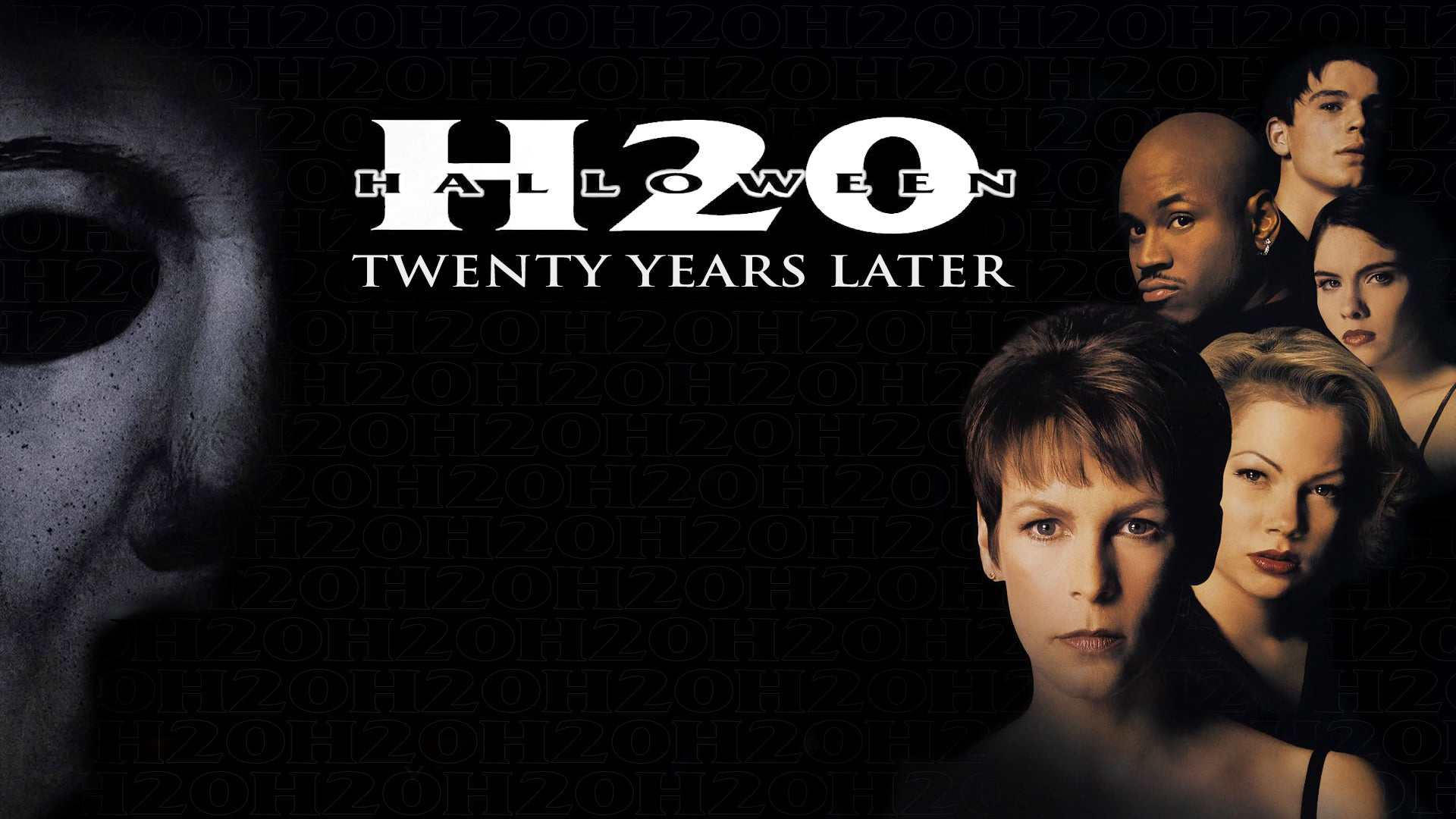
I’m going to begin this conversation with a sort of insane thought. Halloween as a franchise maybe should have ended with its first film.
That’s not to say there’s no value in the Halloween films. Much to the contrary, I like the first three films a lot. I recommend Halloween 3: Season of the Witch to people an annoying amount; I even try to watch it a few times every October to keep the vibes up. And as you already know from clicking on this article, I enjoy Halloween H20: 20 Years Later quite a bit.
I’ve even softened up on the Rob Zombie remake duology over the years. I don’t like them, but it’s like getting flowers, I can still appreciate them. However, Halloween, as a series, has long suffered from its own success. And sometimes, it feels like it’s just going to keep suffering.
HALLOWEEN’S FIRST BOLD CHOICE AFTER 16 YEARS OF WAITING
It’s easy to forget that John Carpenter’s original Halloween was effectively the Paranormal Activity of its time. Flipping a cool $70 million and change off of a $300,000 budget, it has had a genuinely immeasurable impact on the cinematic landscape and how horror films are made.
For some, that’s a bad thing. Notoriously, my beloved 3rd entry in the franchise was considered a hard misstep by audiences. Everyone knows the story; the resounding “Where’s Michael?” response to the third entry gunned down Carpenter’s desires to turn Halloween into an anthology series. So, after going into hiding for 5 years, Halloween 4 continued the story of Michael in 1988.
And then it just kept going.
As the years went on, it became progressively harder and harder to innovate, resulting in some very odd plotlines and tones. Which is why Halloween H20 is where the franchise peaked. Because it had a rare essence to it. It had guts.
It was willing to actually kill the series once and for all, even if it was impossible to do so.
EVIL DOESN’T DIE TONIGHT, THE CONTRACT SAYS SO
Before David Gordon Green’s reboot trilogy brought Laurie back as a Sarah Connor style badass, H20’s pre-production had reinvented Strode to usher in the 20th anniversary of the first film. She went from a resilient young woman into a traumatized survivor running from her past.
The original concept for Halloween H20 involved a substance abusing Laurie Strode trying to get clean so she could die with dignity against an escaped Michael. In a turn of events, she would find the will to live and kill him once and for all. It was a concept Jamie Lee Curtis was passionate about, understandably so. Laurie wasn’t the first final girl, but she was the codifier for that ideal, in a way Jess Bradford and Sally Hardesty before her weren’t. It would have made for a harrowing exploration of what was debatably the most important final girl ever.
That isn’t what happened.
There is an infamous video from a Q&A panel with Jamie Lee Curtis where she explains that the blame for Michael surviving H20 lies primarily with one man: the late great Moustapha Akkad. Akkad was famous for his business acumen, but that desire to see the Halloween franchise make bankroll had ultimately stolen away Laurie’s triumphant victory over Michael.
You see, Akkad had written a clause into the contracts surrounding the film. A clause that she could not, in no uncertain terms, kill Michael Myers. Michael would live, no matter what Laurie did. But thanks to the meddling mind of Scream creator Kevin Williamson, who had been brought on to work on the screenplay for H20, Laurie did get her vengeance in a way.
LAURIE STRODES RETURN DONE RIGHT
The actual H20 follows Laurie Strode in hiding years after Halloween 2, ignoring the events of the sequels. She’s the headmistress of a boarding school, living under a fake name far from Haddonfield with her son. But still, she can’t let go of that Halloween night. She sees Michael’s face, The Shape, everywhere. She can barely stomach talking about what happened. But when Michael kills Dr. Loomis, nurse Marion Chambers, and then finds her, Laurie is forced to face her greatest fear once and for all.
And she does. After a prolonged chase and fight on the grounds of the school, she refuses to let a wounded Michael be taken into custody. Stealing a cop’s gun and an ambulance, Laurie runs Michael off a cliff and pins him against a tree with the vehicle. She shares a brief moment with him, inscrutable eyes reflecting Michael’s. They could be expressing a number of possible emotions. Is it empathy? Hatred? Pity? Fear leaving her for the final time?
Regardless of what it is, she’s done feeling it. With a hefty swing, she decapitates him with a fire axe, ending Michael for the last time. It’s over.
Roll credits. Audience cheers. The world is healing.
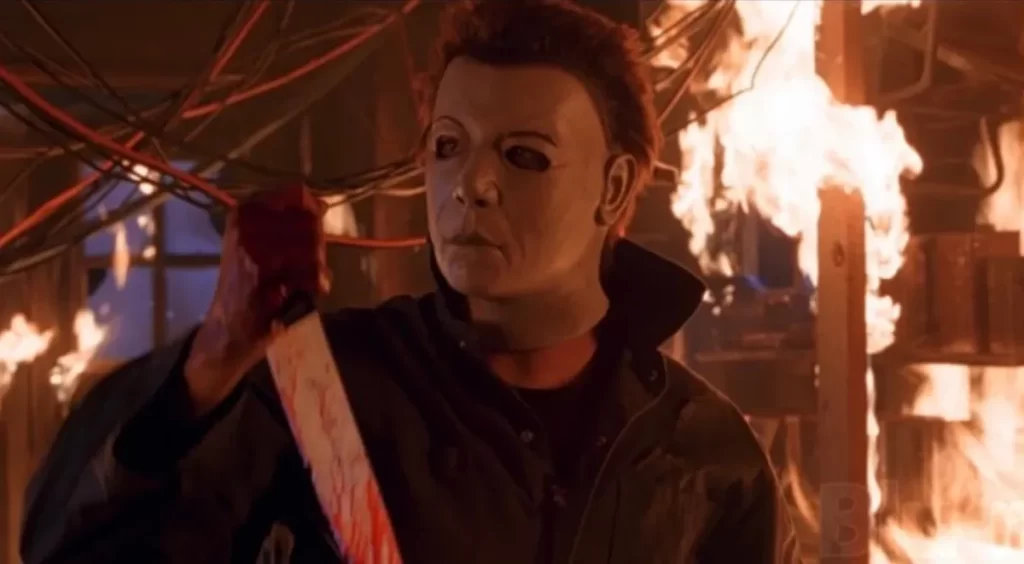
AND THEN HALLOWEEN: RESURRECTION HAPPENS
Yes, and then Halloween: Resurrection happens. Laurie is killed in the first few minutes, revealing that Michael pulled the old bamboozle switcheroonie in the previous film. She had actually just killed an ambulance driver that Michael had put the mask on. Williamson’s trick of making both Laurie and the audience believe they had killed Michael worked. But that same trick curled a finger on the monkey’s paw and led to what is definitively the worst film in the franchise.
A proto-internet streamer subplot. The kid from Smart House is there for some reason. Busta Rhymes hits Michael Myers with the Charlie Murphy front kick from that one Dave Chappelle sketch about Rick James.
Roll credits. The audience boos. Everyone who spent money on it feels like they’re being stamped to death by horses.
HALLOWEEN AS A FRANCHISE IS TERRIFIED OF ENDINGS
And this is why I say that Halloween H20 is probably the best we’re going to get out of the series, maybe ever. It is a series that, at its core, has had producers terrified of endings since even Halloween 2. Carpenter never intended there to be a sequel, or any follow ups for that matter. That was mostly the work of producer Irwin Yablans, who pushed hard to continue the story of Michael. And then, eventually, it was the work of every other producer who demanded they milk Halloween for all its worth.
H20 is a film that is antithetical to that idea. When watched as intended, ignoring Resurrection, it’s fantastic. As the end of Laurie and Michael’s story, one that shows evil is weak without fear to bolster it, it is pretty much the perfect finale. Hot off the heels of Scream’s success in 1996, H20 is often talked about as an attempt to cash in on the meta-horror craze of the 90s and early 2000s. The way people discuss it, you would think it was supposed to be a tongue-in-cheek slasher that made fun of itself and Halloween’s legacy. But in reality, aside from its humor, it ends up being quite reflective and thoughtful of that legacy.
It’s not spiteful of the films that came before it because it ends by tricking the audience. It’s what that trick represents, boldly spitting in the eye of Halloween being held prisoner for money. Mocking Halloween being stuck in an eternal cycle of rinsing and repeating the same events. It doesn’t care about franchising or longevity; it cares about telling a good story and letting its hero rest. It’s respectful to Carpenter’s creation in a way that other attempts to continue the series simply weren’t.
H20 TELLS AN ENDING, HALLOWEEN ENDS TRIES TO SELL YOU ONE
It begs the question: why does H20 work here in how it ends the series, but Halloween Ends doesn’t?
All of Ends biggest issues stem from the fact that, unlike H20, it’s trying to sell you an ending instead of making one that feels right. The maudlin closer it gives doesn’t feel real. It doesn’t feel true to the Laurie it shows us, or any other iteration of the character for that matter. It doesn’t feel genuinely emotional in any regard.
And that’s because Ends as a whole doesn’t have the spirit that H20 does. Ends is, first and foremost, a highlight reel reminding you of how cool Halloween is instead of understanding why any of its previous entries were effective. From its marketing to its incredibly clunky climax, it feels like it’s an advertisement for never letting go of Halloween, even when it should have been done a while ago. And that’s just the wrong lesson to leave on.
JANET LEIGH’S CAMEO IN H20 SPEAKS VOLUMES
Halloween H20 has a pretty famous cameo from Janet Leigh in it, an OG scream queen and the real-life mother of Jamie Lee Curtis. In it, they have a heart-to-heart as fictional characters Laurie Strode and Norma Watson. It’s made more impactful when you realize it was Leigh’s penultimate film performance, and her final performance in a horror film.
The moment serves as a cute in-joke on their real-life relationship, but more than that, it foreshadows the film’s ending. Norma urges Laurie to move past her fear, to relish her future as a survivor instead of being caught up in the past and reliving the same night over and over again.
I find this scene even more poignant now, seeing how neatly it reflects on what has happened to Halloween as a franchise in the years since the original, and especially since H20. It’s a series that got stuck in trying to continue the same story and just got progressively worse at it. In some way, it feels like it’s urging us to make a choice. No matter how deep a legacy of fear may be, it must come to an end at some point. There is no need to cling to the same stories over and over. We can enjoy them for what they are without returning to them.
No matter what the future of the Halloween franchise is, only a viewer themselves can choose where the story ends. It doesn’t matter how many times the studio brings him back, you have to make the choice. Only you decide when it ends. And for my money, H20 is the best ending you can ask for.























